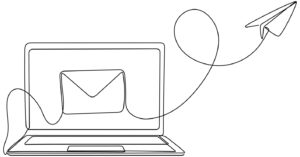How to edit like a pro
Identify the author’s key points, eliminate needless text, and let verbs do the heavy lifting. As you revise and polish, do so with empathy.

Editing is not unlike janitorial work.
Someone makes a mess, and it’s our solemn duty to clean it up. Of course, tidying up text is a mere fraction of what we do. On any given day, we must combine the distinctive skills of butchers, therapists, diplomats, reporters, middle managers and teachers. (Some tasks require hostage negotiation tactics.)
Unfortunately, there’s no comprehensive manual providing universal instructions for editors. Our work is neither math nor science. Much of what we do boils down to personal preference, stylistic nitpickery and the measured guidance of the Associated Press. However, that doesn’t mean we can’t be analytical, intentional, strategic and precise in our approach.
Here to help you edit like a pro is former Ragan executive editor, Rob Reinalda, 2019 winner of the prestigious ACES Robinson Prize for excellence in editing. Below are his most helpful tips, along with a few pointers of my own (which I’ve either learned through repeated blunders or subconsciously cribbed from him).
Reinalda recommends six steps:
1. Assess the whole piece.
Read it through without making any changes. Especially with an unknown author, determining the writer’s level of competence lets you know just how much you’ll have to rework.
2. Identify the key points.
Make sure the writer has something to say. Identify what salient points they’re offering, and highlight them. Make sure those points survive in the final product.
3. Eliminate bloat.
Minimize filler, throat-clearers, redundancies and other needless phrasing. Cut the text in half, if possible. Common throat-clearers include:
- Not surprisingly …
- Be sure to …
- At the end of the day …
- In fact/The fact of the matter is …
4. Let verbs do the heavy lifting.
Ditch weak phrasing such as “negatively affected” in favor of “damaged,” “tarnished” or “undermined.” Use a thesaurus; then double-check the dictionary entry to make sure the new word is precisely what you want.
5. Review and polish.
Read through multiple times to check for noun/verb agreement, consistency of tenses, proper syntax, clarity and flow.
6. Read it out loud, backward.
Start with the last sentence, and proceed in reverse to the top. It’s a savvy way to catch misspellings, doubled words and other stealthy errors.
A few more tips for the road
As you edit, keep these three suggestions in mind, as well:
Make the top bits interesting.
Chances are, the headline of the piece you’re editing stinks to high heaven. It’s probably a flaccid placeholder that the author slapped together just minutes before sending it to you. The same is probably true for the lede you’re staring at, which almost certainly contains an enlightening observation such as, “Can you believe it’s already spring?” or “Everyone knows that content marketing is awesome.”
It’s not enough to make the copy squeaky clean; you must make the piece enticing, engaging and enjoyable. To do so, spend plenty of time turning the headline, teaser and lede into something that will compel readers to dive in and keep reading.
Add beef and spice.
Some editing assignments are akin to a “Top Chef” challenge that forces you to make something palatable out of gruel that’s been ladled into your bowl. Add flavor by replacing dull words with whimsical ones, and beef up the article with helpful links or data-backed sourcing.
Instead of heaving your writer’s bowl of bland oatmeal into the trash, sweeten up the piece with flavorful ingredients. Enhance the writer’s voice, and help produce a tastier, more satisfying creation.
Be an empathetic human being.
Empathy is what separates us from the robots (for now, at least). Edit aggressively, but respect the writer’s voice. Use your position to encourage, educate and inspire your writers and colleagues. Track changes meticulously, and explain the reasoning behind major revisions. Make editing a give-and-take, instead of just imposing your will. Ask for—and respond to—feedback.
Above all, edit with empathy. That’s the key to building trust, creating better working relationships and becoming an invaluable editor.







